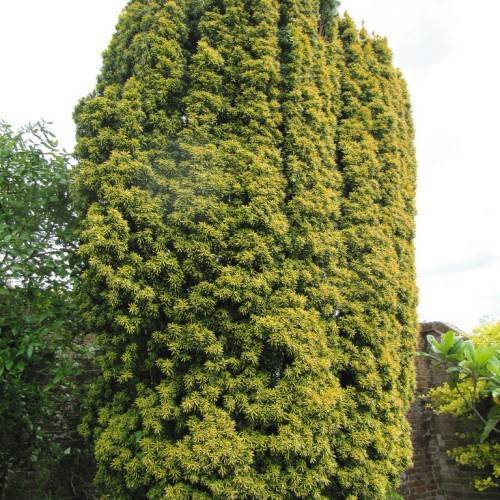
English yew
Taxus baccata 'Standishii'
Cycle:
Perennial
Watering:
Average
Hardiness Zone:
6 - 7
Flowers:
Flowers
Sun:
Full sun,part shade
Cones:
Yes
Leaf:
Yes
Growth Rate:
Low
Maintenance:
Low
Poisonous To Humans:
Yes
Poisonous To Pets:
Yes
Thorny:
Yes
Care Level:
Moderate
watering
English yew (Taxus baccata 'Standishii') should be watered thoroughly and deeply twice a week up until the first hard freeze of winter. During the summer months, it prefers having consistently moist soil, so try to water it enough to keep the soil from drying out. During the winter, reduce watering to once a month. Ensure that English yew does not sit in water for too long as its delicate roots cannot tolerate any type of wet feet for long periods of time.
sunlight
The English yew (Taxus baccata 'Standishii') prefers full sun to partial shade, with at least 4-6 hours of direct sunlight per day. Morning sun is preferred, as the tree may suffer from sunburn if exposed to the sun's hotter afternoon rays. During summer months, English yews should be shaded midday when temperatures become too hot. This species is also relatively tolerant of urban pollution.
pruning
English yew (Taxus baccata 'Standishii') is capable of responding well to a rigorous pruning schedule. Pruning should be done during the dormant season, typically late winter or early spring, after the danger of frost has passed. The plant should be trimmed up to 2 thirds of its size with shears and hedge trimmers. Young and newly planted yews can be pruned more severely. Pruning should focus on maintaining the shape and size of the plant. Remove older, inward facing branches and excess growth to improve air circulation and bring in light to the center of the hedge. With regular maintenance, plants should require little pruning after they are established.
